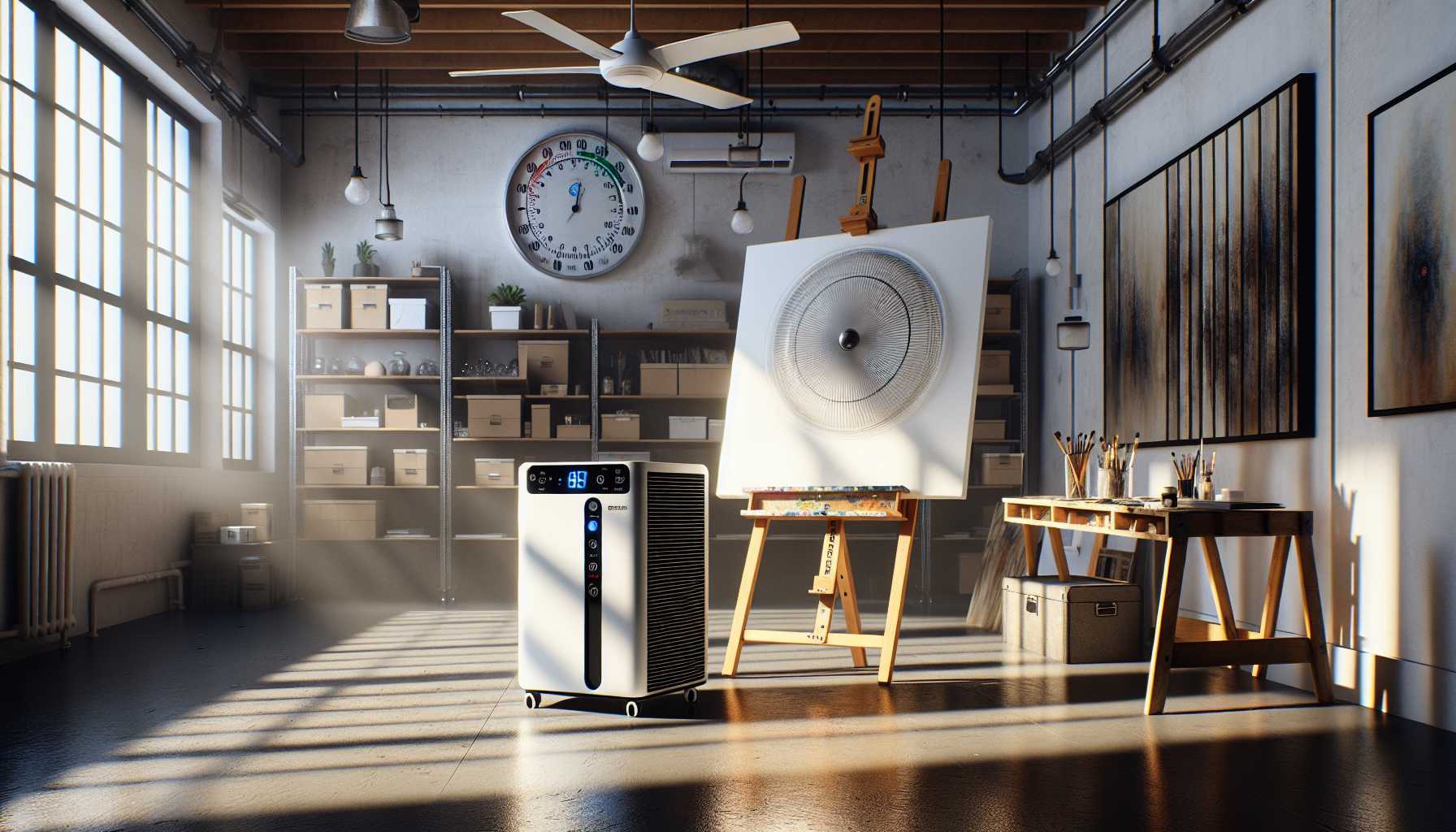Canvas Painting in Humidity: Environmental Control Guide

Navigating Humidity's Effects on Canvas Art: A Comprehensive Environmental Guide
SEO Slug: guide-to-humidity-control-for-canvas-art Focus Keyphrase: humidity control for canvas art Meta Description: Our thorough guide offers you essential tips and tricks on how to shield your canvas art from detrimental humidity damage. Learn how to maintain the integrity of your masterpiece.
Does your canvas art seem peculiar during the moist weather? You're far from alone in this! As an artist and experienced art restorer, I've witnessed how humidity can deface great pieces of art. Let's delve into the measures we can take to safeguard your creations against moisture damage.
Deciphering the Effects of Humidity on Canvas Artwork
Think of your canvas as an entity that breathes and lives. The fibers of the canvas swell as humidity increases, and contract when it decreases. This continuous phenomenon can result in sagging, distortions, and even the growth of mold, which you definitely do not want to affect your invaluable artwork!
Optimal Humidity Levels for Preserving Art
The safest range for canvas art rests between 45-55% of relative humidity. The key advice I often give to my clients is that stability matters more than accuracy. The abrupt shifts in humidity levels are what really tarnish your pieces.
Indications of Humidity-Induced Damage
These are the clues you need to be on the lookout for: - An undulating or buckled canvas surface - Obvious spots of mold - Cracks or flakes in the paint - A stale, musty odor - A noticeable dampness when you touch the canvas
Practical Measures for Controlling Humidity
Invest in a Dehumidifier
Your Canvas art will certainly appreciate this! Having a small dehumidifier in my studio has been a game-changer for me. The key is to remember to drain it regularly.
Ensure Efficient Ventilation
Better air circulation works wonders. Open the windows when the weather is dry but be cautious when humidity levels are high. I opt to use fans to keep the air circulating around my art pieces.
Intelligent Storage Arrangements
Never make the mistake of storing artwork in cellars or lofts. I learned this lesson the hard way. Always store your pieces in rooms that are climate-controlled and distanced from external walls.
Protective Measures from Professionals
Consider adding these to your inventory: - Hygrometers for each room housing your artwork - Silica gel packets for safe storage - Moisture-resistant backing boards - Frames of professional quality
Knowing When to Consult Professionals
If extensive damage surfaces, remember not to panic! Reach out to a professional art restorer. Sometimes attempting to rectify humidity damage independently can exacerbate the situation.
Artist's Guidelines for Avoiding Humidity Damage
When you're producing new art, follow these steps: - Correctly prime your canvas - Apply a protective coat of varnish - Opt for high-quality materials - Allow for adequate drying time
Strategies for Prolonged Preservation
Committing to preserving your artwork is a long-term challenge, not a quick fix. Undertaking regular checks and maintenance will aid in keeping your creations preserved and beautiful over the years.
Let's always remember that every piece of canvas art deserves a fitting home! By managing humidity, you're assuring that your art will be admired by generations to come. So, have any of you noticed the adverse effects of humidity on your pieces? Share your experiences!